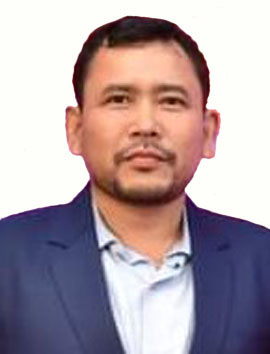Dr Chaitra Dhar Taye
@nonejbcollege.org
Assistant Professor, Department of Geology
Jagannath Barooah College
RESEARCH, TEACHING, or OTHER INTERESTS
Geology, Earth and Planetary Sciences, Geochemistry and Petrology
Scopus Publications
Scopus Publications
Raktim Ranjan Saikia, Chaitra Dhar Taye, Nurul Amin, Sorat Konwar, Laura Panzeri, and Anna Galli
MDPI AG
This study aimed to uncover the chronology and production technologies of ancient bricks unearthed from various locations in Upper Assam, Northeast India. To achieve this goal, complementary spectroscopic techniques such as Fourier Transform Infrared Spectroscopy (FTIR), X-ray Diffraction (XRD), Scanning Electron Microscope (SEM) coupled with Energy Dispersive Spectrometer (EDS), as well as Thermoluminescence (TL) and Optically Stimulated Luminescence (OSL/IRSL) dating, were applied. FTIR and XRD analyses revealed the presence of quartz, feldspar (microcline, orthoclase, albite), kaolinite, chlorite, cerussite, palygorskite, magnetite, hematite, and organic carbon. The mineralogical composition indicates two distinct groups with firing temperatures below 650 °C and above ~800 °C. These two groups could be the first indication of the presence of two civilizations or at least two different production technologies involving different firing temperatures and kiln atmospheric conditions. Further, the SEM-EDS study suggests that both calcareous and non-calcareous clays were used in brick making, which have low and high refractory properties, respectively. The internal morphology of the samples shows the existence of micropores and microfractures, indicating the influence of higher-temperature firing. Absolute dating techniques associate the two brick groups with different age ranges: a firing temperature above ~800 °C indicates a superior technology corresponding to a production period between the 7th and 10th centuries CE. In contrast, a temperature below 650 °C indicates a technologically less advanced group of people, with the age group dated between the 11th and 14th centuries CE.
Ananya Chutia, Dimple Moni Kachari, and Chaitra Dhar Taye
Geological Society of India
ABSTRACT The Paleogene sediments of the Shillong Plateau are exposed in the southern part of Meghalaya and are designated as the Jaintia Group. The Lower Sylhet Sandstone Member (LSSM) (Therria Sandstone) is the lowermost member of the Shella Formation of Jaintia Group. To understand the depositional history of the studied sandstones, petrographic and geochemical approaches have been made. Petrographically, these sandstones are classified as quartz arenite and quartz wacke. They were derived from intermediate to upper rank metamorphic and plutonic source which were deposited in a craton interior and quartzose recycled tectonic setting. The paleoweathering indices of CIA, CIW, PIA and ICV indicate that the weathering at the provenance was intense. The tectonic discrimination diagrams suggest passive margin setting for their sedimentation and climatic condition during the deposition was humid in nature. The studied sediments were deposited in non-marine conditions as evidenced by the geochemical proxies and primary sedimentary structures existing in the LSSM.
Ananya Chutia, Chaitra Dhar Taye, Jagriti Daimari, and Debasish Chutia
Geological Society of India


